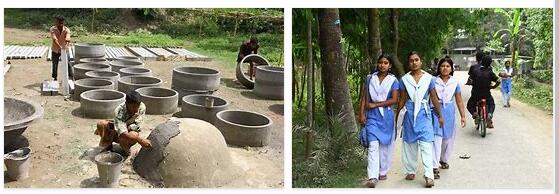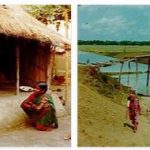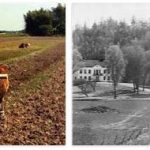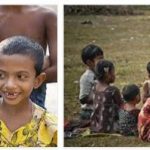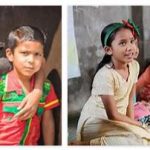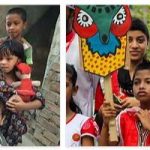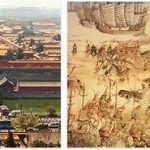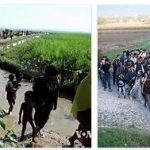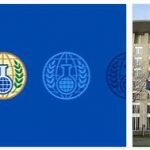4: Gloomy prospects in the 1970s
A fairly typical example of the situation of the poor was our neighbor Mosum Ali and his family. He had inherited two acres of land from his father which he gradually had to sell in order to buy food. While we lived in the village, he was mortgaging the small raised plot of land where his modest house stood. The fruit trees on his plot of land were mortgaged, and he had to give away coconuts, papayas and bananas to the neighbor he had borrowed money from. In 1980, we were sure that the next stop for Mosum Ali and his family would be the slums of Dhaka.
Another person we feared might suffer the same fate was Geddy, a young divorced woman with two young children. She lived in a simple bamboo hut right next to us and was a maid for several families. Both she and the children were starving, and it was easy to see that her children were malnourished.
Our research project produced a lot of statistics from Shusunda. I gradually wrote a more social anthropological book about the village with a focus on survival strategies for the poor and investment strategies for the few relatively wealthy farmers. Land ownership and use rights were a key issue along with various types of land disputes.
At the end of the 1970s, there were many, both scientists and others, who looked gloomily at the future of Bangladesh. There were no limits to the misery that awaited the small poor country with scarce natural resources and a rapidly growing population. The World Bank and the Bangladeshi authorities also had poor forecasts for the country. In Shusunda, the locals themselves were worried about what the future would bring.
5: Last 30 years: Visible progress
In March 2010, I will return to Shusunda to begin a new fieldwork. For a month I live in the same village families as in the late 1970s. It soon becomes clear to me that it is not just tractors, scooter taxis and motorcycles that characterize the changes in the village. I see no worn earth huts with straw roofs anymore. All houses have corrugated iron roofs. The walls are also made of corrugated iron or built of solid brick. The best houses stand on a robust foundation of cement. The village has received electricity, and almost all the hundred families who now live in the village have access to electricity. 40 of the 100 families have now acquired television.
Geddy proudly shows me the nice house she now lives in with her son and his family. “Do you remember how often I and mine starved a long time ago?” she asks. “Now I have an electric fan in the ceiling and my own television. In the evening we watch Bangla TV. ” Geddy was trained by the BRAC (Bangladesh Rural Advancement Committee), the world’s largest non-governmental development organization, in the 1980s and 1990s. For a long time she headed the organization’s local office in Shusunda. She has also received several loans from the microcredit institution Grameen Bank.
Positive news also about Mosum Ali: He and his family have stuck to the village and have been on the rise. One son has been employed in the Middle East and the other in a national development organization in Dhaka. The latter comes home every weekend.
“Look,” he says, pointing to a piece of land near the house, “now we have bought back the piece of land my father had to sell. In addition, both my brother and I have built new, beautiful houses. ” He says that their wives are members of BRAC and Grameen Bank, and that all the children go to school. Other visible improvements concern water, toilet and sanitary conditions. Many families have their own water pumps in the courtyard and toilets on cast cement floors.
6: Far better education – fewer in agriculture
The village school has been refurbished and has 232 students. 132 are girls. Three of the school’s seven teachers are women. The school has nice blackboards, pictures and maps on the walls. Almost all students wear school uniforms and the school is buzzing with activity. We interview approx. 30 families in their home in the village. In all homes, we ask to look at the children’s school books.
All students have their own books that they have received for free. Most of the elderly parents are illiterate, while their children in 7th, 8th and 9th grade – high school in Bangladesh – read to us from their books, both in Bangla and English. The parents are visibly proud. Every morning we see large groups of girls aged 14-15 walking through the village on their way to the high school in the neighboring village.
However, the biggest change is less visible: the dependence on income and wages from agriculture has been reduced. While almost all the inhabitants of the village were completely dependent on agriculture 30 years ago, only a third of the population in 2010 cites agriculture as the main source of income. Most families have members who are in paid employment and have their main income outside agriculture. However, since agriculture has been mechanized, yields have doubled. In addition to rice and jute, which were the traditional crops, wheat, corn, tobacco and vegetables are now grown.
With so many people having secure incomes outside agriculture, according to BAGLIB.COM, the wage level has risen sharply . In Shusunda, which 30 years earlier had been characterized by unemployment among young men, it is now difficult to get enough workers for agriculture. Wage workers in agriculture come in large groups from poorer areas in northern Bangladesh. For a daily wage, a worker can now buy between five and ten kilos of rice. What is the cause of this obvious and easily visible material progress?
